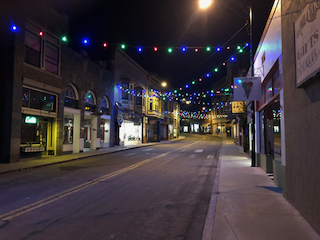Since I’m a total public policy nerd and former legislator, I can’t help but dive in to some issues that I think could represent some common ground across the political spectrum.
This month, I’m taking a look at how we can boost rural economic growth by focusing on the power of historic downtowns.
Boosting rural economic growth has been the holy grail of state economic development planning in Arizona, often with less-than-stellar results.

However, based on lessons from other historic redevelopment in Arizona, the key is the historic buildings and infrastructure themselves.
I also believe that there is a model that will spark growth in small towns like never before, especially if the legislature can pass a state historic tax credit to complement the existing federal historic tax credit that has enabled numerous projects across Arizona.
And you will never have to utter the acronyms “TIFF” or “GIPLET.”
In fact, this model is designed to attract and grow more locally-owned businesses and tourism, which contribute more revenue to cities, counties and the state than out-of-state businesses often do.
If you look at historic downtowns like Tucson, Cottonwood, Flagstaff or Prescott, you will see that the preservation of historic main streets has been a proven catalyst for economic growth.
They proved a simple rule: the more we can support our picturesque historic downtowns, the more we can draw business investment.
This column serves as a call to action to those of you who would like to continue to workshop and refine this idea, based on your on-the-ground experiences. I have draft legislation, but I see this as a cooperative effort of partners all over the state.
Following are the broad points of this idea.
In order to begin, each municipality must create a district, called a Historic Hometown Redevelopment District, or “HHRD,” along with a HHRD Board. The district can be a maximum of one square mile in size, in which no less than 40% of the buildings must be more than 60 years old –the denser the better.
There will be a natural desire to build this zone around a downtown business district because the HHRD will trigger a set-aside of the state’s portion of transaction privilege tax (TPT) revenue from businesses within that district, which will be held in the HHRD Fund at the state.
A city may have only one district. And, if awarded, the city will be eligible to draw down money from this fund for a maximum of five years from when they begin. They may only spend that money on preservation of public buildings, pedestrian-friendly street improvements, traffic mitigation, the burial of utilities and the creation of a public Wi-Fi zone.
As a hypothetical example, a municipality with a density of historic structures will be able to set aside some of the state’s portion of the sales tax that is generated from within that district for a maximum of five years. In that time, they will be able to complete a project that will beautify, renew and modernize the public assets in that zone.
I have also built into the HHRD concept a way to leverage Opportunity Zones, possible future historic tax credits or private historic preservation investment to boost results.
Initial analysis from last year suggests that this program would make available about $500,000 to $600,000 per year for a town the size of Payson. That number could increase or decrease, depending on how many applicants there are every year.
While that may not seem like a lot of money, please remember that this is (a) just for infrastructure in a small downtown historic zone and (b) can be leveraged against other funding.
There are other specific details in the draft legislation. However, you can see already how this broad outline will create a downtown that is more inviting for local investment.
People who work in historic preservation know that revitalization often follows the same pattern.
First, the city invests to beautify the historic downtown. Having laid the canvas, those first businesses into the historic downtown are often the pioneers who attract others to follow. From there, the municipality can take the next steps to further improve the district.
The importance of HHRDs is that it can help those municipalities that don’t have that initial capacity for the first step. Yet, it is limited in time and scope. Further, the draft legislation creates checks on the expenditures.
Undoubtedly, you are asking yourself about what limits there would be on funding, who would oversee this effort and what the application process entails.
These details are in the draft legislation and I hope this column serves as a call to interested parties to workshop the idea over the next few months.









